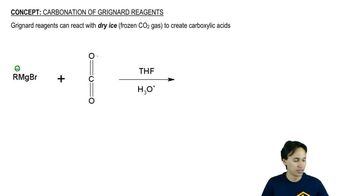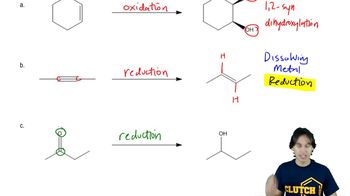Predict the products of the following reactions.
(a) sec-butylmagnesium iodide + D2O
(b) n-butyllithium + CH3CH2OH
(c) isobutylmagnesium bromide + but-1-yne

 Verified step by step guidance
Verified step by step guidance Verified video answer for a similar problem:
Verified video answer for a similar problem:



 0:24m
0:24mMaster Intro to Predict the Product with a bite sized video explanation from Johnny
Start learning